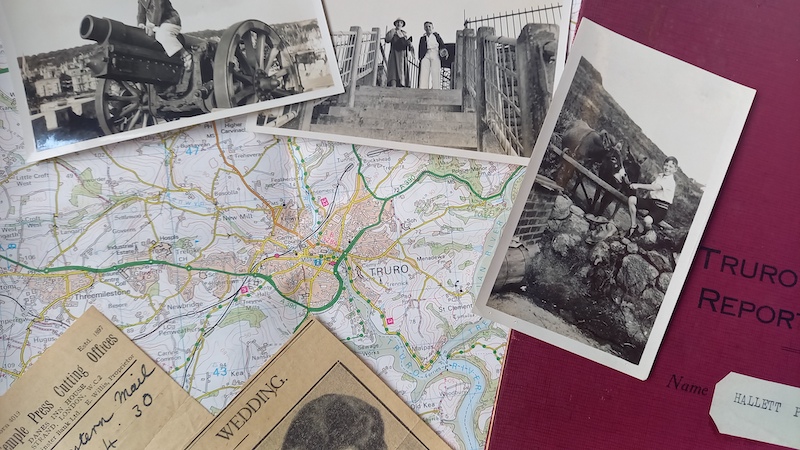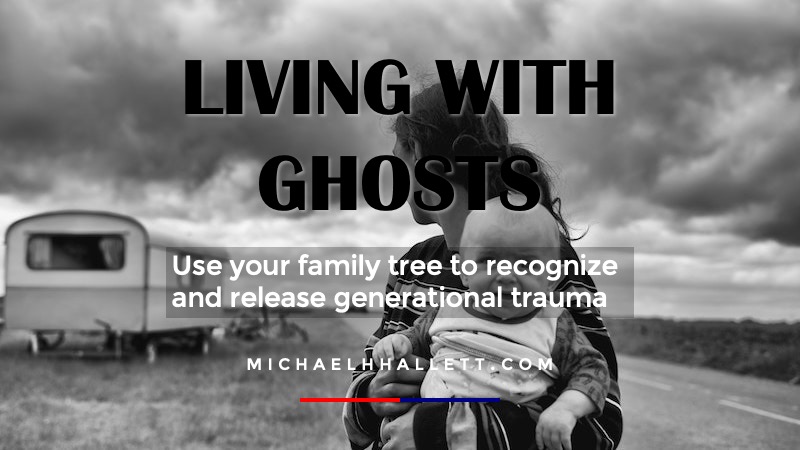How to work with the geography of generational trauma
- 8 December 2023
- Posted by: Michael H Hallett
- Category: Generational trauma , How-to & step-by-step ,

I’ve recently come to a new understanding of the importance of geography in resolving generational trauma. Trauma formation is inextricably linked with the place it occurred. I’m ashamed to admit how long it’s taken me to recognise just how powerful a role geography can play in its release. I was aware of the connection. I just hadn’t followed it through to its logical conclusion.
Cornwall
One of my earliest experiences of releasing generational trauma—before I’d even heard the term, let alone that it applied to me—centred on my grandmother Violet, who was expelled from the family in the 1930s after having an affair and retired to Rock in Cornwall.
As I describe in Living with ghosts – confronting generational trauma, I unexpectedly learned my grandmother’s old address and—even more unexpectedly—found myself going precisely to Rock. It was hard to escape the feeling that I’d somehow magnetised the conditions for releasing the trauma.
The geography was critical. As soon as I stepped out of the car at my grandmother’s old house the pain of betrayal, abandonment, and separation that she plunged the family into erupted out of my psyche, spanning three generations and over eighty years.
Embedded in the geography
Suzannah Lessard opens her memoir of family trauma, The Architect of Desire, with a direct reference to the connection between geography and trauma:
“When I was a little girl, I liked to go into a formal garden of box bushes that lay just to the west of my grandparents’ house. The box garden, as it was called, was on a terrace that was significantly lower than the house and thus apart, in a zone of its own… It seems to me now that my family story was all there always, everywhere, layered away, as in the kernels of box, and that I absorbed it somatically—took it in through my pores with the gritty box dust.”
Layered away. I’ve written before about trauma residing as interpenetrating layers of mental, emotional, and physical (cellular) damage from a variety of sources. One of those layers resides in the geography itself.
When I visited Rock and triggered my grandmother’s trauma, I understood the geographic proximity was a factor. It’s not just a factor; it’s a vital piece of the puzzle.
Part of the trauma is in the landscape.
It’s literally embedded in the geography of where events took place.
When I took my trauma to a location intimately linked to its formation—“Open sesame!”—I completed enough of the energetic jigsaw puzzle for the trauma to quite literally pop.
Working with geography
There are various psychological aide-memoires we can use to help us unravel family trauma.
Memorabilia such as letters, jewellery, trinkets, medals, or books. Music with links back to a person, place, or time. All these can be used to strengthen our connection to the trauma, to help shift it from unconscious to conscious.
I’ve found that images can also help us visualise the time and place of traumatic events and ground them into our current reality. If you’re dealing with trauma from war, books like the Osprey Men-at-Arms series, with colour images of the soldiers’ uniforms and equipment are more effective than reading a dry, text-only historical narrative.
Yet geography seems to be the most powerful. It’s almost like an alchemical reaction, mixing the trauma we carry inside with the trauma buried in the landscape. Places where traumatic events occurred can also be easily identified and are often easily accessible.
But beware the risk of a trauma being triggered.
Be prepared. Stay hydrated. Breathe and ground yourself before approaching the site of the trauma. If possible, travel with someone else—preferably someone who at least knows that you’re venturing into the whitespace on the map of your family’s emotional history.
Work responsibly, and geography can be a crucial ally in clearing family trauma.
ONLINE COURSE
Photo by Michael H Hallett

